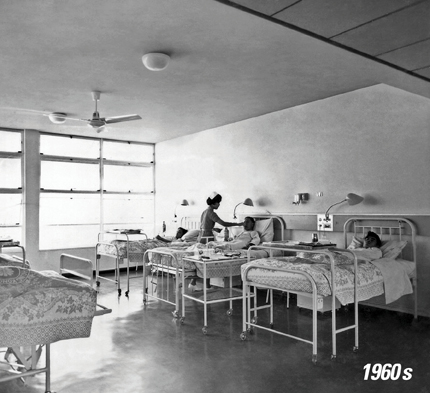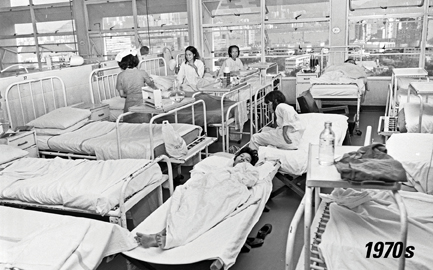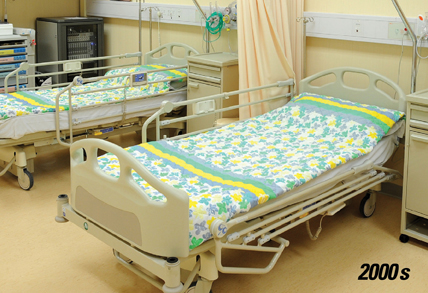From iron berths to hi-tech hoists: 50 years of hospital beds
A ward bed is often much more than just a place of rest – for many patients it also offers comfort and security. Hospital beds have improved significantly over the past 50 years, evolving from fixed-form iron frames to easily movable units that can be electrically adjusted to meet a diverse range of patient needs and, in more recent times, make effective use of ceiling hoists and other advanced technologies.
A roving exhibition examining the history of hospital beds began in mid-December last year and will run until end-February this year, during which time it will have visited Hospital Authority (HA) Head Office and various hospitals in the seven clusters. Let's go down the memory lane to relive the years past.
Hospital bed flashback
Hospital beds in the 1960s were essentially ‘iron berths’ with no special features. Department Operations Manager of the Department of Surgery at Princess Margaret Hospital Cinderella Leung, recalls from her 30 years of service that many colleagues got bruised or injured from manually lifting patients. In some cases, it took a group of six colleagues to transfer a patient from one place to another. These static iron frames are now relics in the HA.
Hand-set beds were introduced into public hospitals in the 1970s, and gradually replaced the 'iron-berth' style during the 1980s. “By winding a small handle connected to a ratchet system, we could save some effort when lifting patients,” explains Cinderella. However, the winding often led to back and wrist strains among colleagues.
Electrically-operated beds (e-beds) made their debut at some HA hospitals in the 1990s, and HA introduced more multi-functional e-beds in 2007. Ward Manager of the Department of Neurosurgery at Tuen Mun Hospital Chan Cheuk-Kui has experienced working with several generations of e-beds since the 1990s. He said e-beds not only give patients a sense of autonomy, but also reduce the risk of colleagues straining or injuring themselves and free up their time to focus on other clinical care services.
In 2014, a HK$253 million donation from the Hong Kong Jockey Club Charities Trust under the ‘Jockey Club Inpatient Facilities Modernisation Scheme’ has enabled over 6,000 e-beds, including standard beds on general wards and those designated for Intensive Care Unit and for Neurosurgery patients, as well as more than 520 ceiling hoist systems to be installed in public hospitals.
![]()







